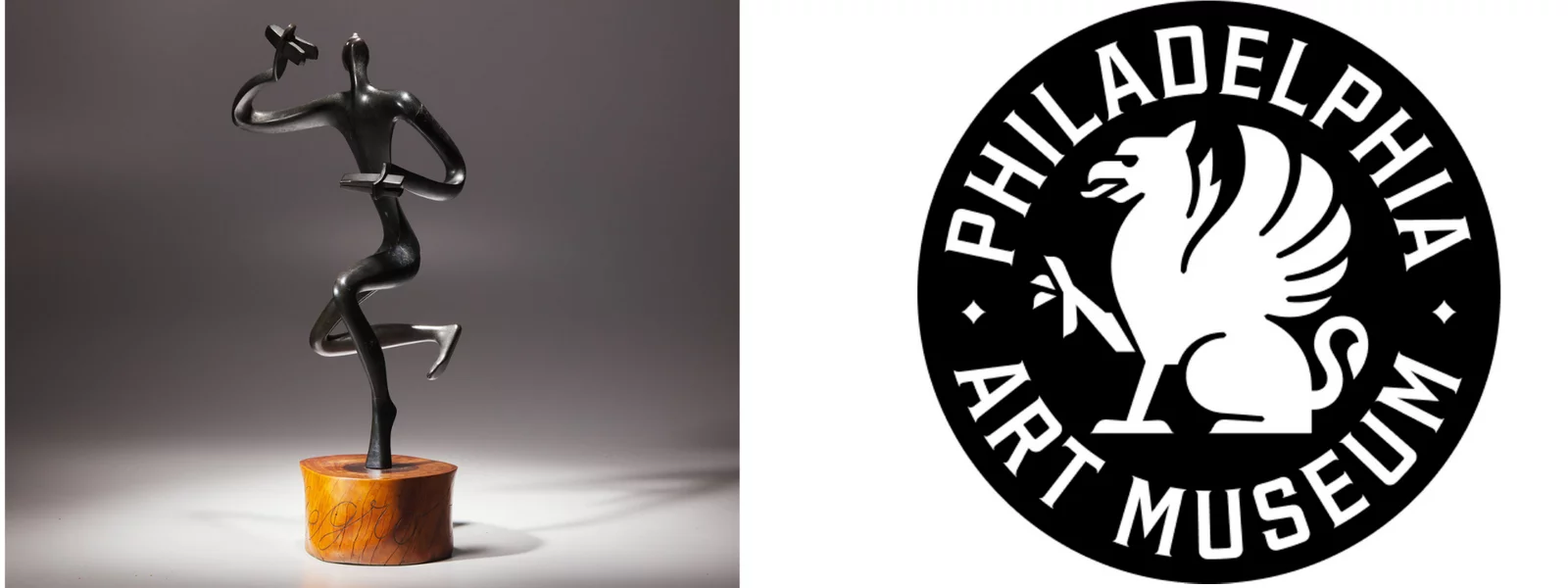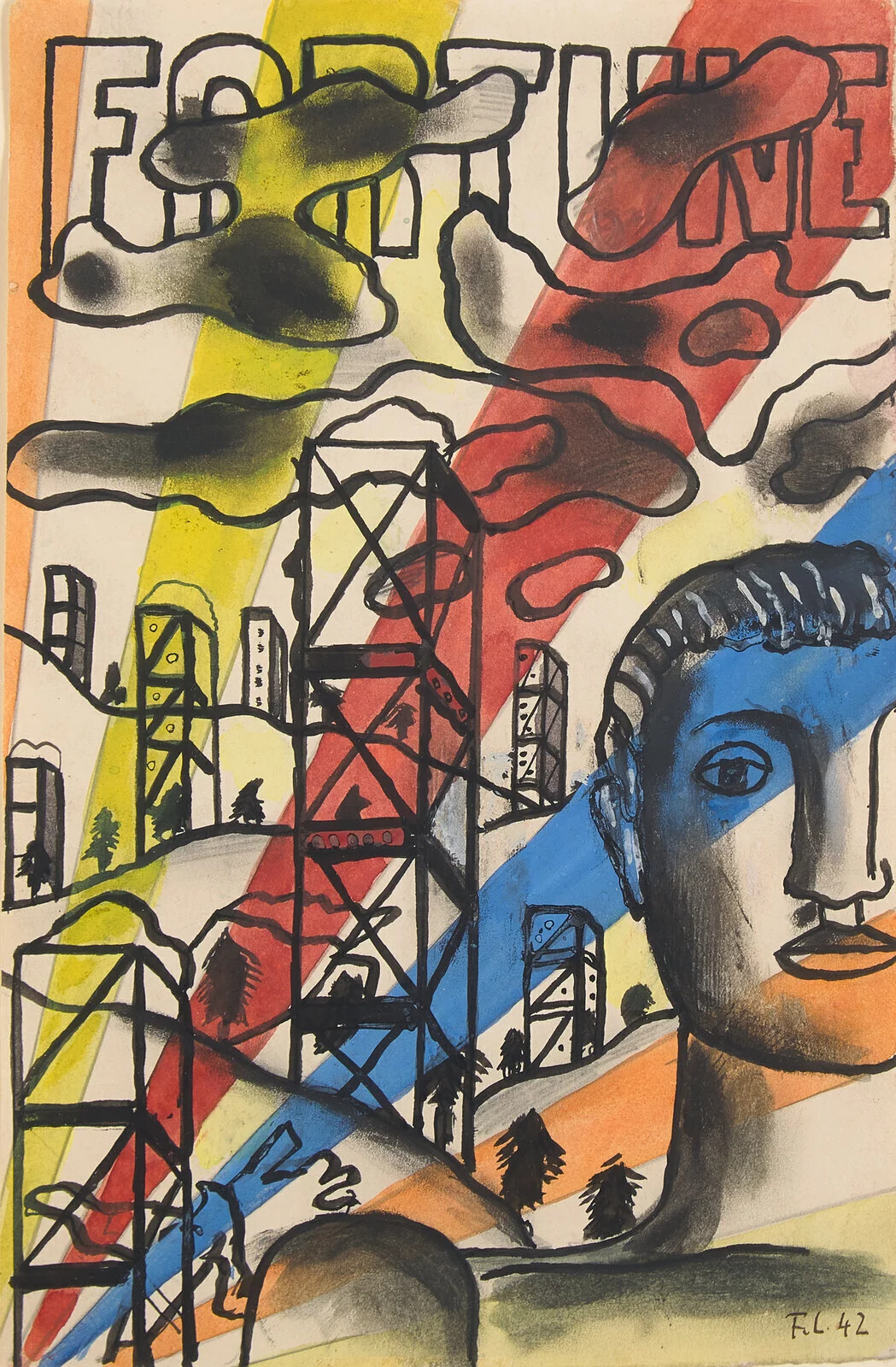Fresh-to-Market Works by Buffet, Picasso, Giacometti Headline Freeman’s | Hindman’s October Auction in New York
On October 28, Freeman’s | Hindman will present the fall edition of its Impressionist and Modern Art sale in New York featuring an exceptional selection of fresh-to-market works by Pablo Picasso, Gustave Loiseau, the brothers Jean and Raoul Dufy, as well as Vietnamese painters Le Pho, and Vu Cao Dam – both represented by a combined total of twelve works, thus reaffirming the house’s position as a market leader for their work. The auction is led by a 1958 canvas by Bernard Buffet, entitled La Tour Eiffel, offered alongside another large still life by the French Modern Master as well as a lovely snowy view of Montmartre by Maurice Utrillo. The sale will also see Leon Underwood’s rare Negro Rhythm bronze make its first appearance on the open market directly from the distinguished collection of the Philadelphia Museum of Art (freshly renamed the Philadelphia Art Museum).

Lot 96 | Bernard Buffet (French, 1928-1999) | La Tour Eiffel, 1958 | Estimate: $150,000 – 250,000 Property from the Collection of Harry C Moore, CBE.
Speaking to the sale is Vice President, Head of Department, Impressionist and Modern Art, Raphaël Chatroux. “I am very proud of the warm response to our October edition, which reaffirms the strong platform we provide for Impressionist and Modern Art. Consignors continue to recognize our proven track record with artists such as Le Pho, and Vu Cao Dam. I am particularly thrilled to bring the sale to New York this season, where we will unveil two fresh-to-market masterpieces by Bernard Buffet, both of which reveal the depth and brilliance of his genius at the onset of his career.
An Homage to the City of Light: Bernard Buffet’s La Tour Eiffel Leading the sale is La Tour Eiffel (1958) (Lot 96), a standout work by Bernard Buffet. Painted at the height of his early acclaim, this striking canvas relates to Buffet’s celebrated Paysages de Paris series, an homage to his native city and one of the most compelling urban cycles of post-war French painting. In La Tour Eiffel, Buffet elevates the famed monument beyond its touristic identity, investing it with brooding psychological intensity and positioning it as a symbol of both personal and national endurance in the wake of World War II.
Rendered in Buffet’s unmistakable style, with rigid black outlines, a limited color palette, and a stark, expressionist realism, the Eiffel Tower also serves as a self-portrait of the artist himself, who, by, 1958 had already cemented his status as a defining figure of his generation. With accolades including the Prix de la Critique at age 20, a major retrospective at Galerie Charpentier, and wide recognition as the heir to non-abstract Modernism in France, Buffet stood as one of the most influential artists of his generation – a celebrity emphasized by his large and existentialist 1955 still-life, Le Jacquet, which the artist had exhibited in the French Pavillion of the Venice Biennale in 1956.
A Monumental Vision in Exile: Léger’s Dynamic Response to American Industry and Wartime Tensions
Lot 77 | Fernand Léger (French, 1881-1955) | Le Combattant (Design for the Cover of Fortune Magazine), 1942 Estimate: $100,000 - 150,000
Offered as part of Echoes of the Past: Property from an Important Private Collection, this 1942 work by Fernand Léger (Lot 77) reflects the artist’s remarkable creative period during his American exile. Having fled Europe in October 1940, Léger settled in New York, a city he had first visited in 1931 and where he remained until the end of World War II. Though he maintained close ties to the French expatriate community and never fully assimilated into American life, Léger was profoundly inspired by the energy, scale, and industrial dynamism of the United States. He later remarked on the country’s overwhelming vitality and movement, calling it “power in motion” and “force in reserve without end.” By the time he returned to France in late 1945, he had produced an extraordinary body of work, shipping home five crates containing dozens of paintings and over one hundred twenty drawings and studies, including the present piece.
Executed in 1942, it was created as a design for the cover of Fortune, the influential magazine founded by Henry Luce. Known for commissioning leading modern artists and photographers, Fortune collaborated with the likes of Diego Rivera, Ben Shahn, and Walker Evans. Although this design was never published, it represents Léger’s return to graphic design after a long hiatus and showcases how American visual culture reinvigorated his formal vocabulary. The composition combines vivid rays of yellow, red, and blue with bold industrial imagery, including oil derricks and structural frameworks. At its center, a monumental human head stares outward, becoming a stoic symbol of mankind's confrontation with the pressures and uncertainties of a rapidly changing world. The work stands as both a visual statement of Léger’s evolving style and a testament to the enduring relevance of his artistic vision during a moment of profound global upheaval.
Leon Underwood’s Negro Rhythm: Harlem, NY: A Celebration of Movement and Cross-Cultural Influence

From left to right: Lot 8 | Leon Underwood (British, 1890-1975) | Negro Rhythm: Harlem, NY, circa 1934 | Estimate: $30,000 - 50,000 Philadelphia Art Museum, Rebranded Logo
A pioneering figure whose posthumous reputation continues to grow, Underwood was deeply influenced by his study of African, Mexican, and Native American art traditions, insights gained through extensive travel and scholarship. His 1934 publication Art for Heaven’s Sake was among the earliest English-language texts to advocate for African art as a sophisticated, spiritual practice. This cross-cultural perspective shaped both his studio practice and his teaching at the Brook Green School of Art in London, where he emphasized capturing the rhythm and movement of the human body.
A powerful example of Underwood’s dynamic sculptural style, Negro Rhythm: Harlem, NY (Lot 8) embodies the artist’s fascination with form, motion, and musicality. Cast in patinated bronze, the work depicts a dancer in exuberant motion, evoking what critic Christopher Neve described as “an inspired scribble in the air.” The sculpture’s energy and lyrical composition reflect Underwood’s belief in rhythm as a universal artistic language. This important work is offered as Property sold by Order of the Board of Trustees of the Philadelphia Museum of Art to Benefit Acquisitions, further underscoring its significance within the canon of modern sculpture and institutional collecting.

From left to right: Lot 51 | Le Pho (French/Vietnamese, 1907-2001) La Promenade, 1956 | Lot 85 | Vu Cao Dam (French/Vietnamese, 1908-2000) Divinité Blanche, 1976
Additional Top Lots:
· Lot 94 | Kees van Dongen (Dutch/French, 1877-1968) | Portrait of Dora, 1935 Estimate: $120,000 - 180,000
· Lot 60 | Bernard Buffet (French, 1928-1999) | Le Jacquet, 1955 Estimate: $100,000 - 150,000
· Lot 30 | Gustave Loiseau (French, 1865-1935) | Bords de Rivière (Possibly Tournedos-sur-Seine), circa 1899 | Estimate: $80,000 - 120,000
· Lot 6 | Pablo Picasso (Spanish, 1881-1973) | Tête d'Homme (with Deux Têtes verso), 1969 | A Double-Sided Drawing | Estimate: $80,000 - 120,000
· Lot 70 | Le Pho (French/Vietnamese, 1907-2001) | Bouquet Champêtre, 1966 Estimate: $50,000 - 80,000
Sale Preview:
Highlights from the Impressionist and Modern Art auctions will be on view at our New York Galleries located at 32 East 67th St.
October 20-25, 27 | 10 AM—5 PM
